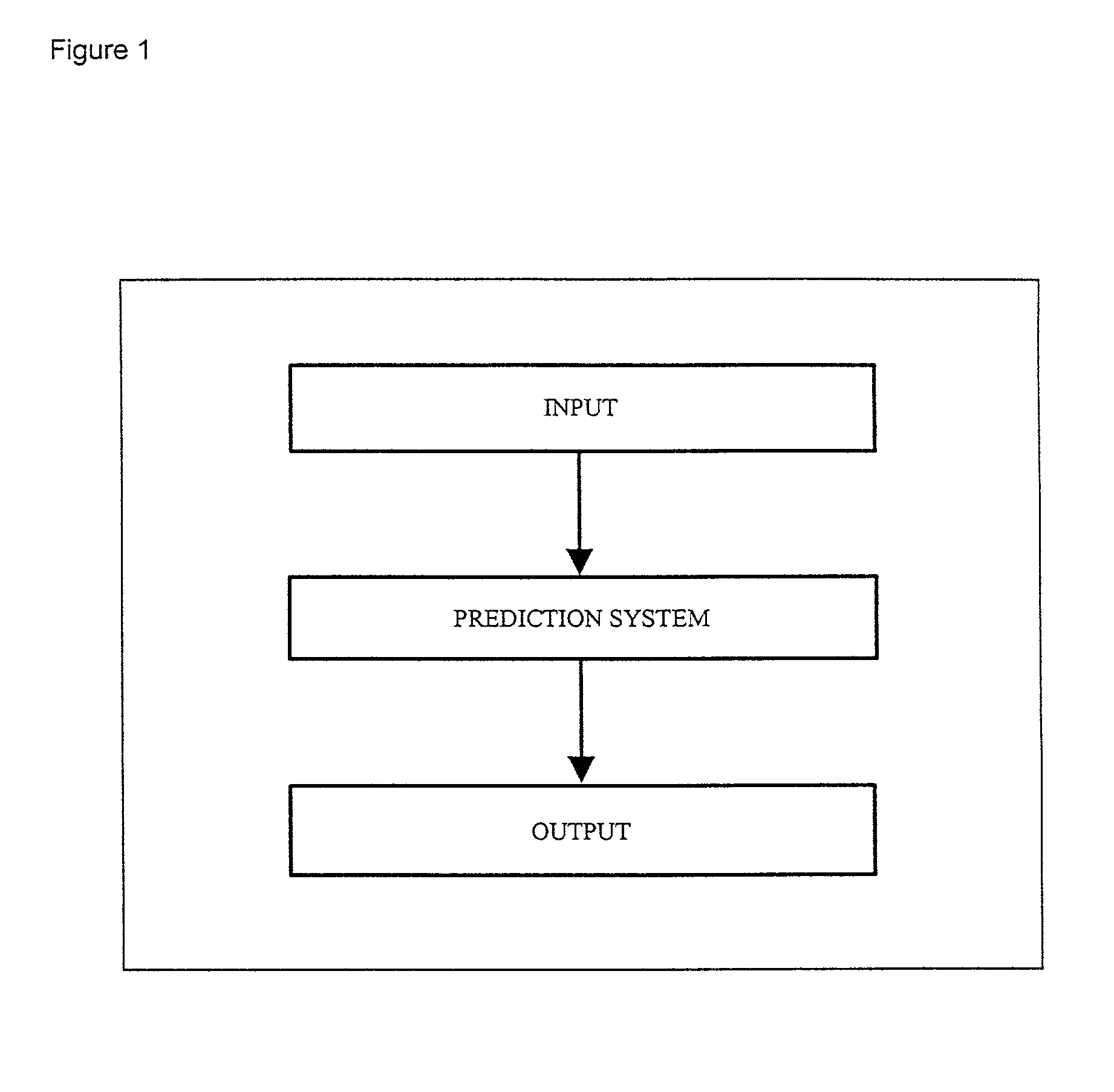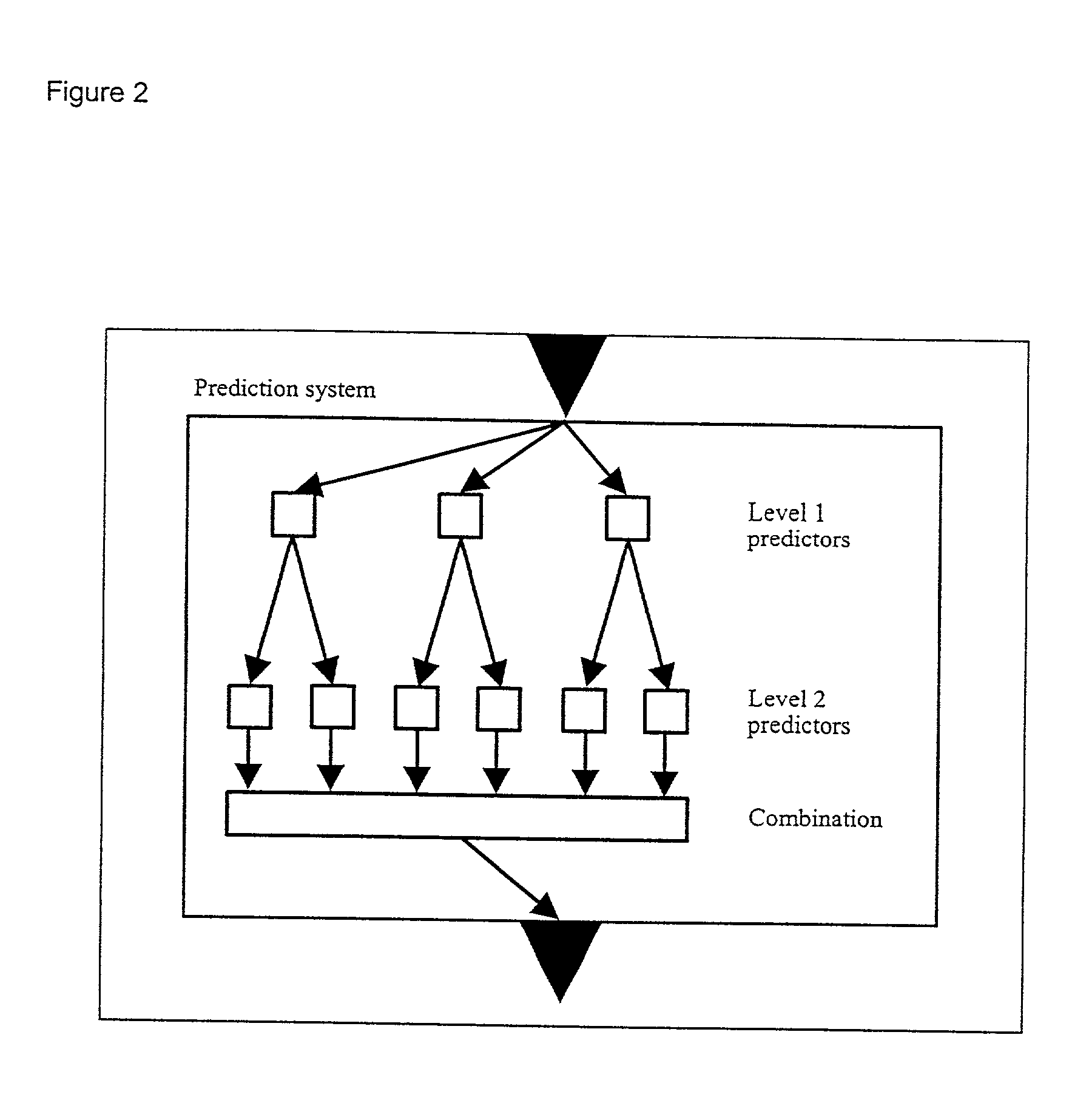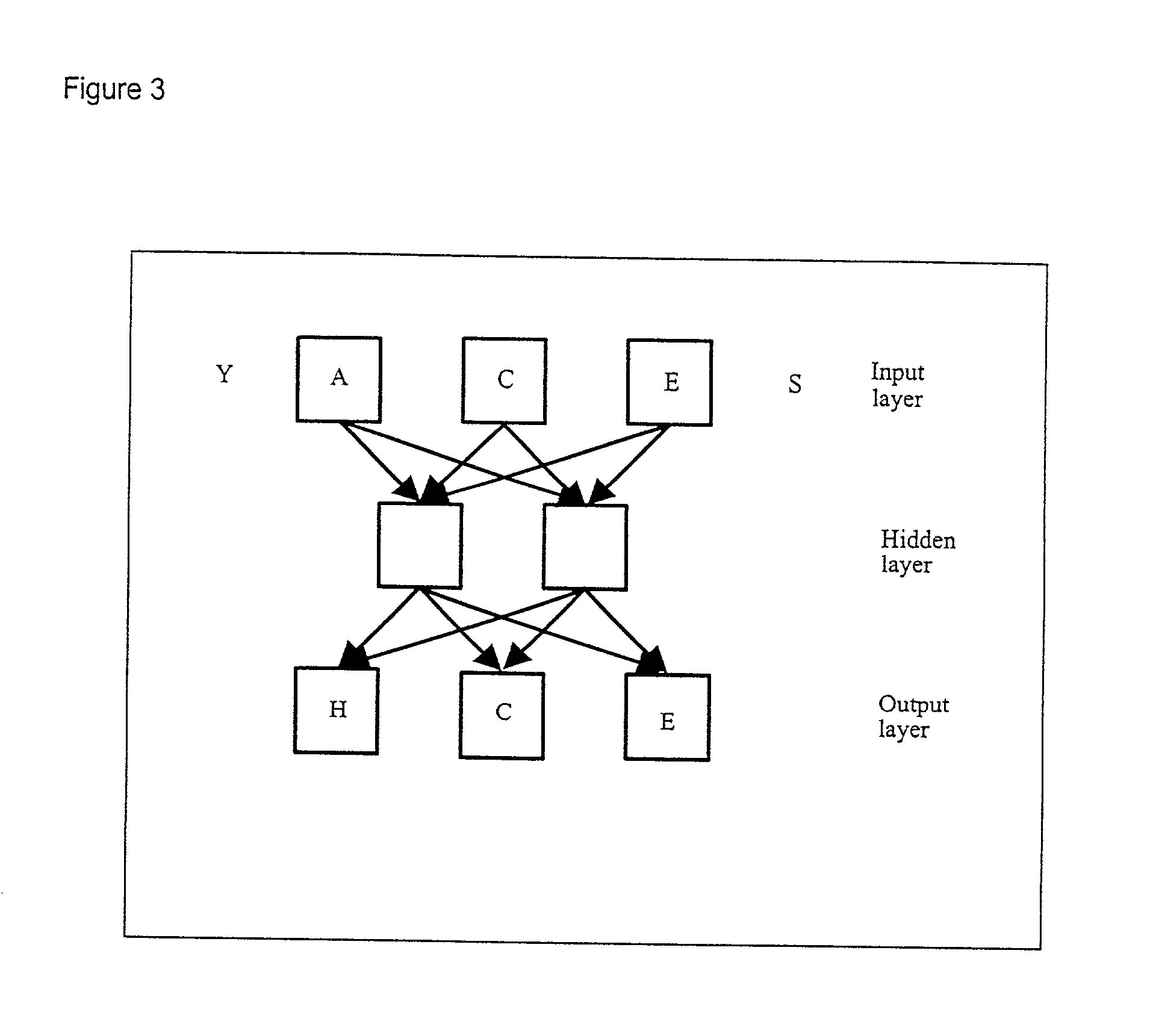Computer predictions of molecules
a technology of molecules and computer predictions, applied in the field of molecules computer predictions, can solve the problems of increasing the amount of data from genome projects at a rate that is difficult to manage by modern scientists and current technologies, increasing the performance, and increasing the accuracy. , to achieve the effect of increasing the accuracy and substantially increasing the performan
- Summary
- Abstract
- Description
- Claims
- Application Information
AI Technical Summary
Benefits of technology
Problems solved by technology
Method used
Image
Examples
Embodiment Construction
-GY . Example 2 GYF . Example 3 YFC H . . . Example 10 KI- H
[0214] As in Table 1, an input window of 3 amino acids have been used. Output expansion have been applied, using an output window of three. This means that when the central amino acid in the input window is the Nth amino acid, a prediction of the secondary structure is not only made for the Nth amino acid but a prediction is also made for the N-1th amino acid and for the N+1th amino acid.
2TABLE 3 Conversion from amino acids to binary descriptors. Input output Example 1 -GY -.H Example 2 GYF ..H Example 3 YFC .HH . . . Example 10 KI- HH-
[0215] Table 3: Conversion from amino acids to binary descriptors.
[0216] Each amino acid in the input window is converted into 21 numbers, each of which are fed into one unit in the input layer of the neural network. The 21.sup.th number is set to one if the position in the window is outside the sequence (represented in the table as the amino acid "-") and zero otherwise. The 20 first numbers...
PUM
| Property | Measurement | Unit |
|---|---|---|
| length | aaaaa | aaaaa |
| chemical | aaaaa | aaaaa |
| physical | aaaaa | aaaaa |
Abstract
Description
Claims
Application Information
 Login to View More
Login to View More - R&D
- Intellectual Property
- Life Sciences
- Materials
- Tech Scout
- Unparalleled Data Quality
- Higher Quality Content
- 60% Fewer Hallucinations
Browse by: Latest US Patents, China's latest patents, Technical Efficacy Thesaurus, Application Domain, Technology Topic, Popular Technical Reports.
© 2025 PatSnap. All rights reserved.Legal|Privacy policy|Modern Slavery Act Transparency Statement|Sitemap|About US| Contact US: help@patsnap.com



